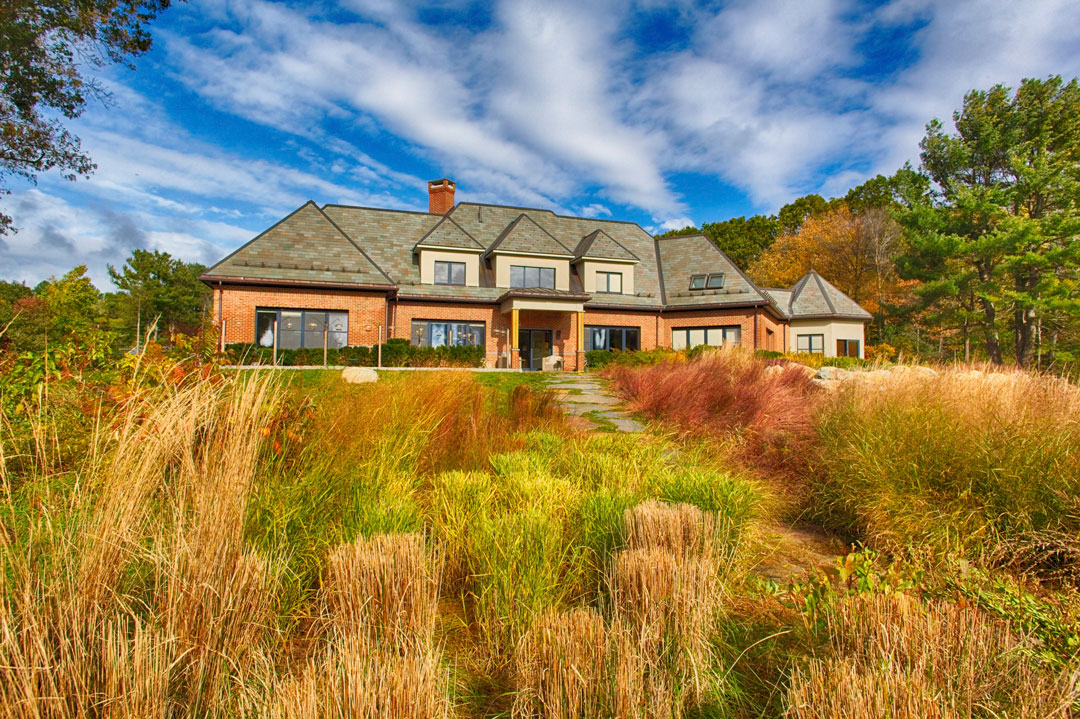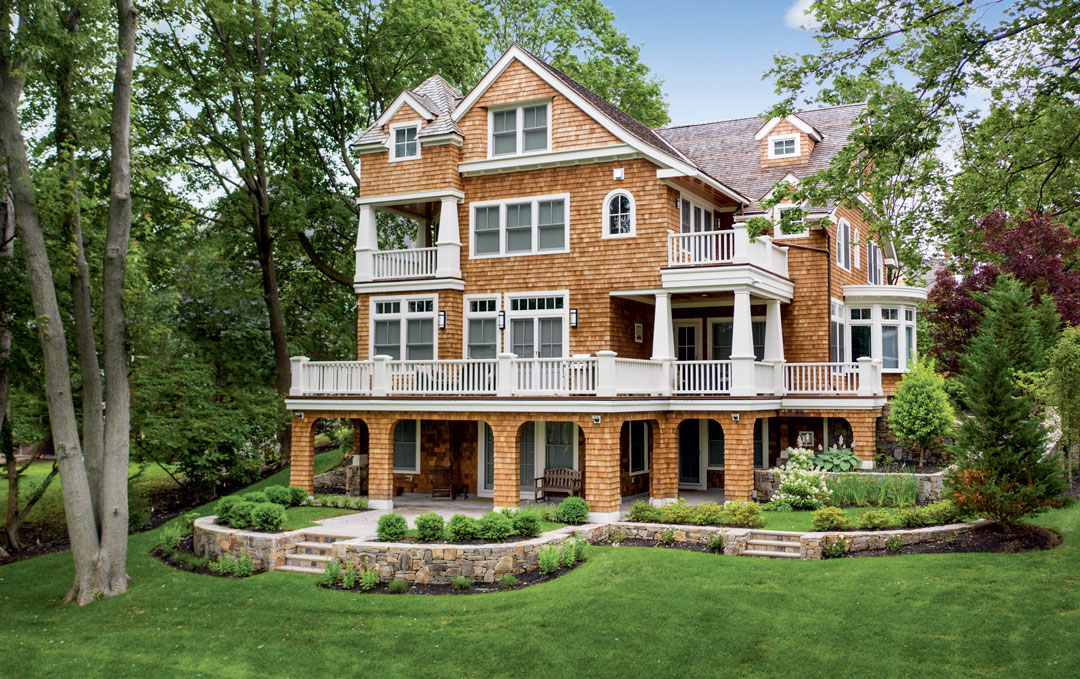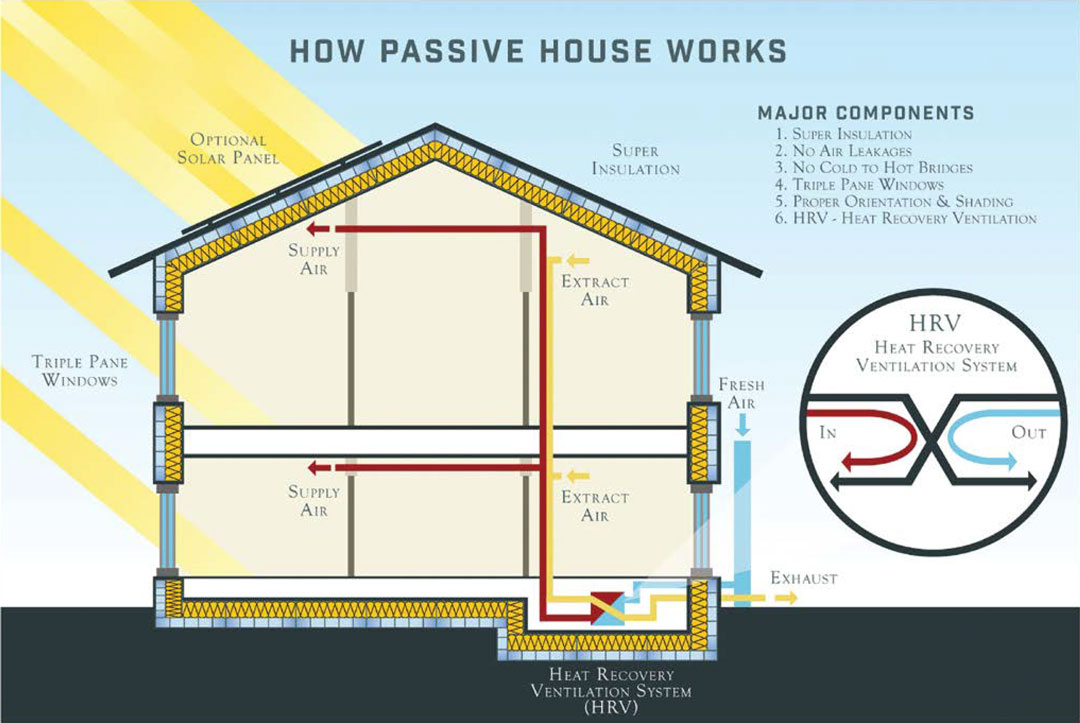April 15, 2022 | Admin

The Art and Science of Passive House
What exactly is a passive home? In short, a passive home must be fine-tuned to be as comfortable, sustainable and environmentally conscious as possible. Passive-home design centers around streamlined efficiency, involving construction practices that can drastically reduce energy consumption and help create a carbon-neutral world. Passive homes aim to be so efficient that they produce as much renewable energy as they use from the electrical grid over the course of a year. Depending on the level of efficiency, some homes may actually have an energy bill of nearly zero.
To be considered a passive home, the structure must meet certain criteria: airtightness, renewable energy systems, substantial insulation, ventilation, waterproofing and minimal electrical loads. Passive homes are built with low-emission materials, moisture regulation and sophisticated ventilation that allows fresh air to circulate while maintaining finely calibrated climate control.
To dispel a couple of myths: No, living in an airtight home does not feel like you’re living in a bubble, and yes, you can open the windows. It’s also worth noting that you don’t have to live in a sleek modern box to reap the benefits of passive-home science. Nick Falkoff, founder of Auburndale Builders, has worked on many old New England homes in his career, demonstrating that it’s also possible to retrofit historic homes while preserving the integrity of the building. Nick and his team balance performance and aesthetics, blending their state-of-the-art solutions into every style of home. Perhaps the most beautiful thing about this technology is that, for the most part, it’s unseen.

Air-tight, triple-glazed windows are an example of the invisible science involved in a passive home. Although he laughs while telling the story, Falkoff isn’t joking when he boasts that a cat was curled up against a window of one of his builds on a bitter cold day. Anyone who owns a cat or an old home in New England knows this is quite a testament to the comfort level this type of home can provide.
Since Falkoff founded Auburndale Builders in 2005, the company has built and remodeled some of the first high-performance, net-zero and passive homes in the Metro West area. With a passion for community growth and development, Falkoff also co-founded of SHPDC (Studio for High Performance Design and Construction studiohpdc.org), a non-profit organization focused on providing education and training resources for the design and construction industry, including classes, workshops, and reference materials. SHPDC will be offering training classes and workshops with certified teachers, for architects, designers, project managers and homeowners.

Five Principles of a Passive House
- Continuous insulation: A Passive House must have a layer of continuous insulation that wraps around the building envelope without any thermal bridging. This is also called “outsulation” because the insulation is installed on the outside of the wall and roof framing.
- Airtight construction: Passive houses require a building envelope that has five times fewer leaks than a code-built home. Air leaks allow infiltration from the outside and a loss of heat.
- High-performance windows and doors: Triple-paned windows with Low-E glazing, argon gas and insulated frames are common. The units need to allow much less air infiltration than typical code-built windows and doors
- Balanced ventilation and high-efficiency mechanical systems: Another critical component of Passive House design is its efficient central ventilation system, which continually exchanges stale inside air for fresh, filtered outside air to maintain a comfortable, consistent temperature and humidity level.
- Managed solar gain: Passive Homes are oriented to use the sun’s energy for heating in the cooler months and to minimize overheating during the hotter months using energy models to account for the sun’s movement through the sky in each season.
Visit www.auburndalebuilders.com/office for more information.


Add new comment